Note: GJEL Accident Attorneys regularly sponsors coverage on Streetsblog San Francisco and Streetsblog California. Unless noted in the story, GJEL Accident Attorneys is not consulted for the content or editorial direction of the sponsored content.
The protected bike lanes on the KONO section of Telegraph Avenue in Oakland, from 20th to 29th, are now well under construction and should be finished mid 2023. Streetsblog thought it's time for a quick update on the progress in this important business district and on this major thoroughfare for cyclists, bus riders, and motorists.
When Streetsblog last checked in April, work on this $4.5 million project was underway on the west side of the street. That side seems to be essentially completed now, and most of the current work (as seen in the photos) has now shifted to the northbound side.
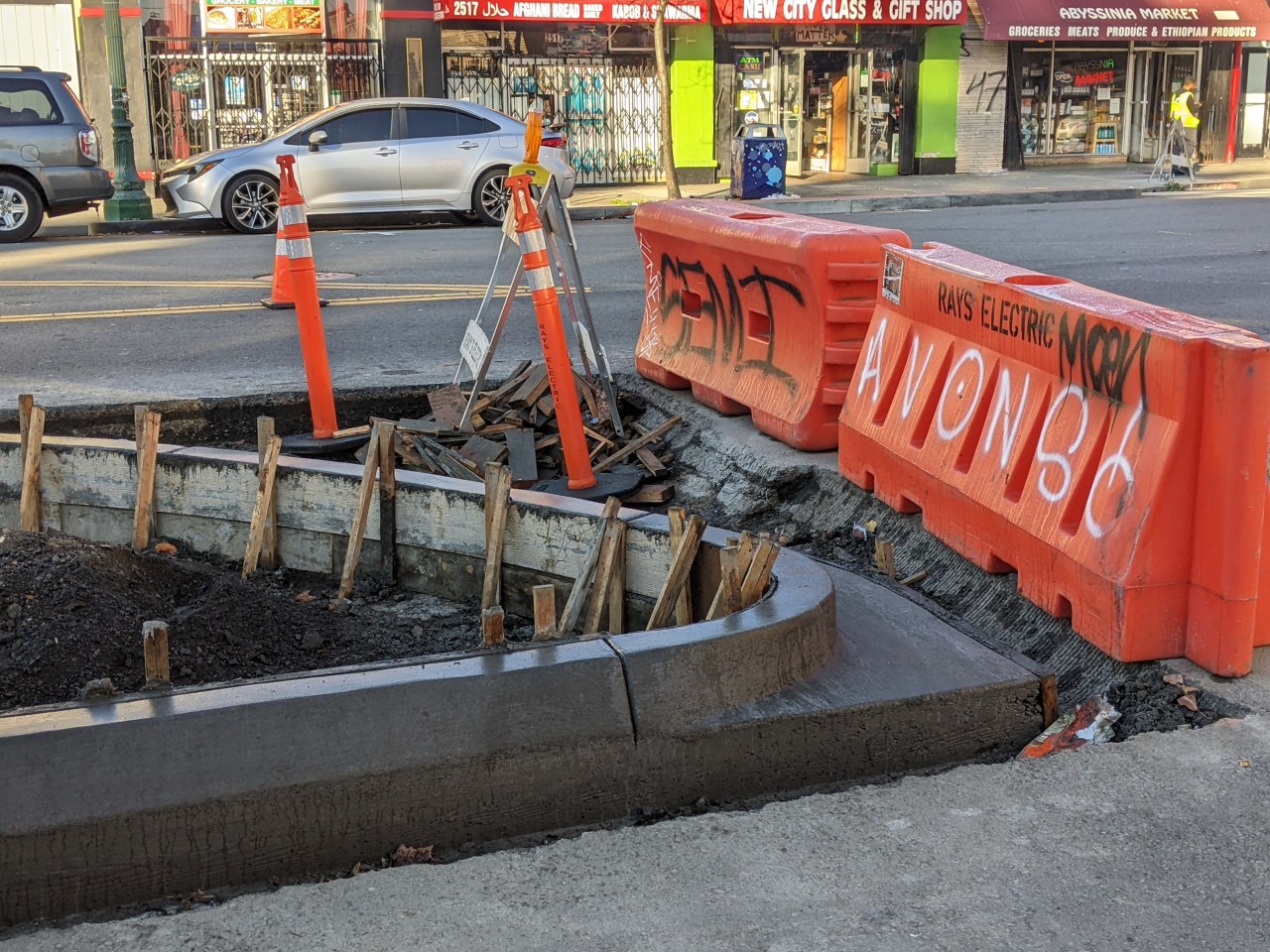
The concrete protection is replacing paint and plastic. Critics of this kind of Dutch-style, protected bike lane treatment express concerns about being sandwiched between curbs and unable to avoid turning motorists at intersections and driveways. That's why a key to this design is to provide sharp corners for cars and concrete extensions to maintain sightlines and make sure motorists are forced to slow to a crawl when crossing the bike lane, to give everyone time to react.
Unfortunately, that's an element that seems to be missing from the current layout on all but the largest intersections. "Yes, concrete-protected intersections on Telegraph at 27th and at Grand are part of the current project," explained Bike East Bay's Robert Prinz in an email to Streetsblog. "I worked with OakDOT to install some posts leading up to those intersections to help mitigate some of the right turn speeds in the interim, as they were even worse before, but yeah - it's still not ideal," wrote Prinz.

The concrete intersection turns (as seen above and below) seem far more gradual than the temporary paint-and-plastic treatments they are replacing. Notice in the photo below the two dark circles that appear to be the former location of vertical posts.
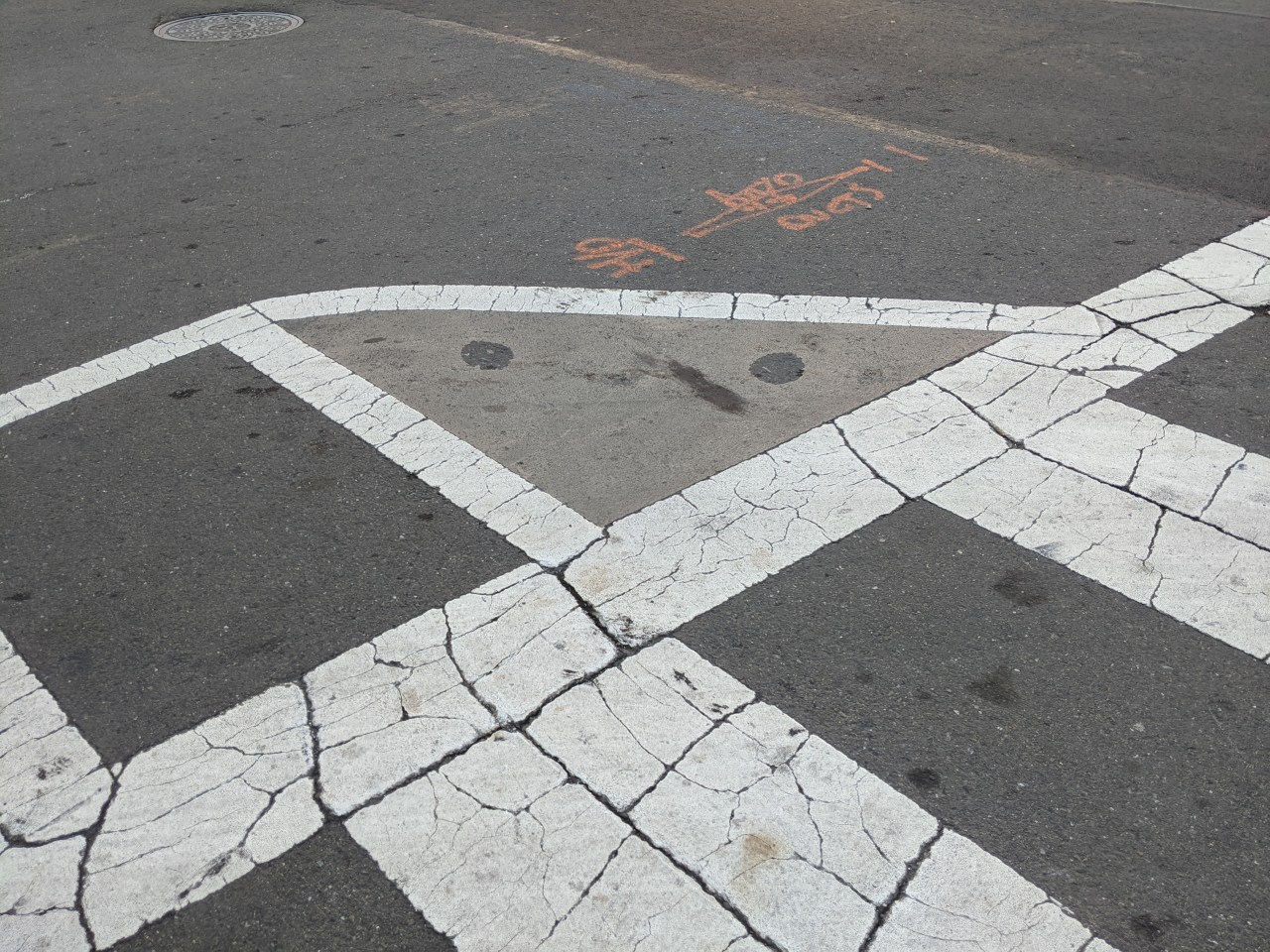
So why doesn't the concrete extend as far as the post they are replacing? Streetsblog has an email out to Oakland DOT to find out what's going on, but going by blueprints of the project, it seems this less-than-favorable design is on purpose, and is not an oversight by construction crews:
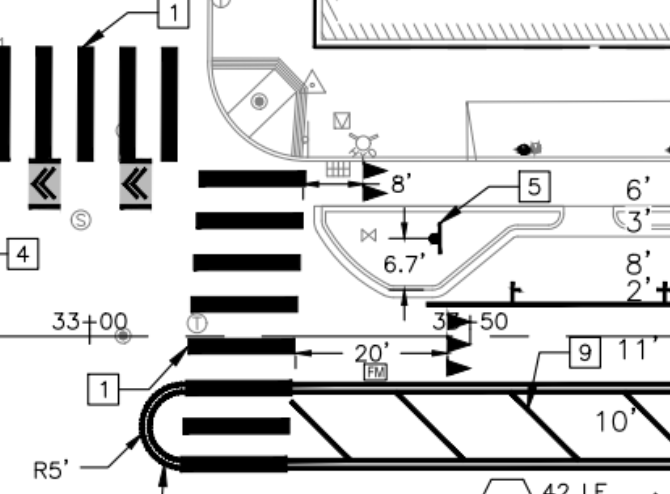
Note in the above image the protective island gently curves away well before the crosswalk, and the crosswalk is not set back, or to the right in this orientation. Unfortunately, this will allow motorists to sweep across the crosswalk and bike lane at an oblique angle before even reaching the intersection itself (where the sidewalk ends). Note in the image below (from Fremont) that a bit of concrete curb lies inside the intersection, beyond the crosswalk, to prevent that kind of fast turn.
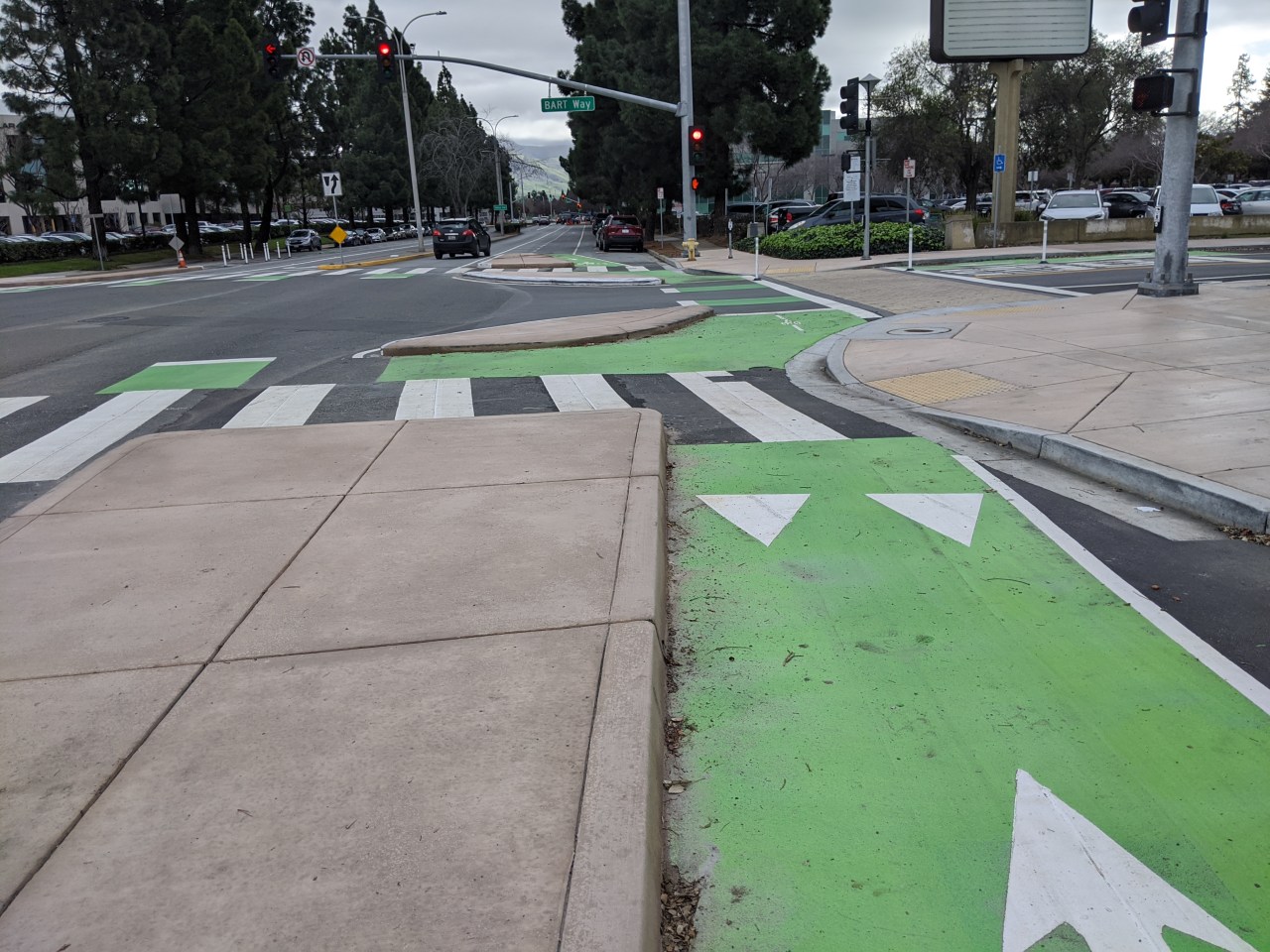
The Fremont example above is more faithful to Dutch-style protected bike lanes and intersections.
It's not that Oakland DOT doesn't know how to do Dutch-style protected intersections--in fact, they've done just that on West Street. And, as Prinz mentioned, they're planning to do it where Telegraph crosses 27th and Grand. So it's unclear why the smaller intersections in this project seem lacking. It's noteworthy that the construction crews have actually placed temporary barriers to protect themselves and the worksites exactly where the curb should extend to, as seen in the images above and below.
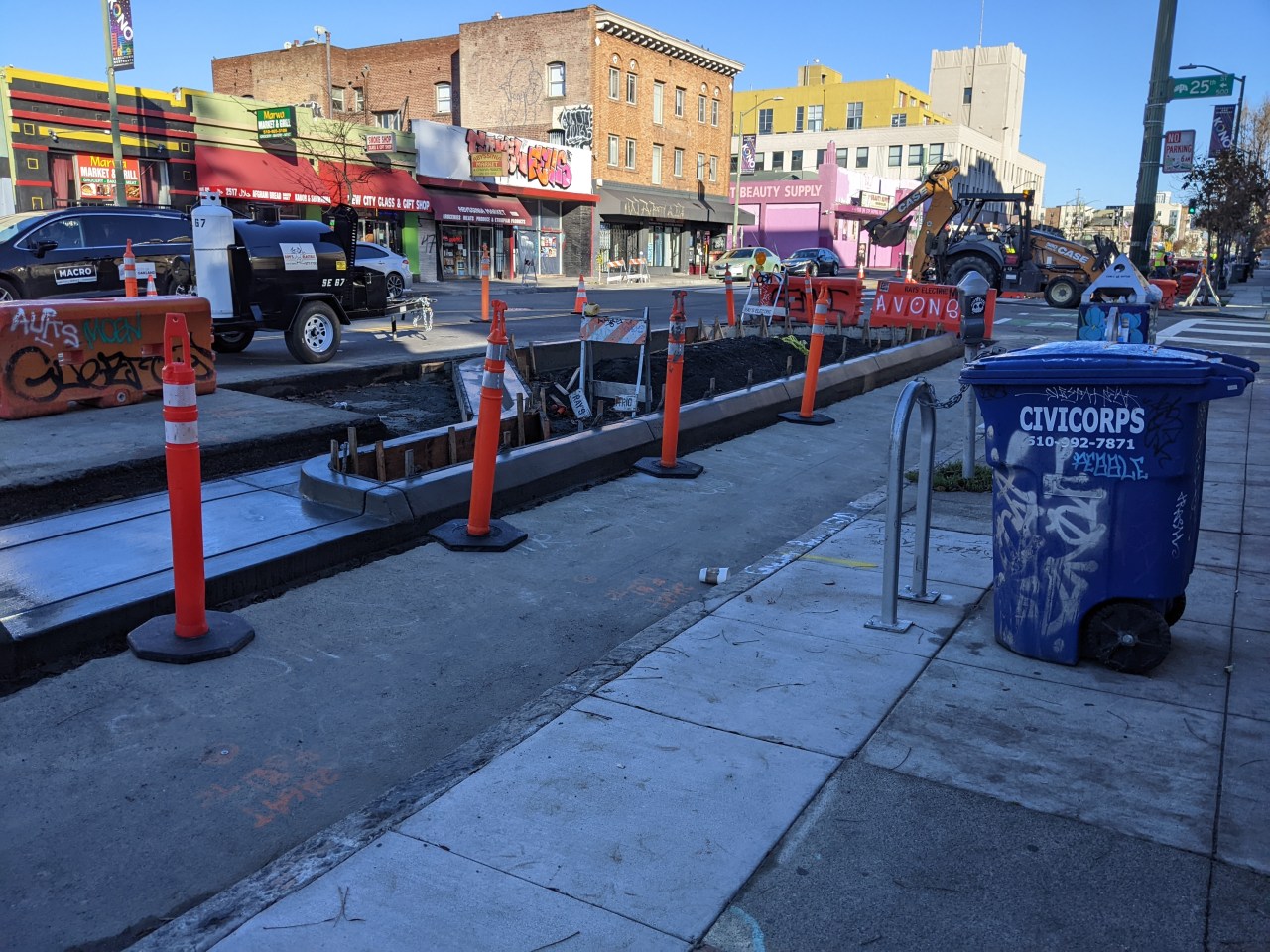
Of course, these issues can be solved using some large concrete planters or steel bollards to supplement the design (which might be ideal, since they can be replaced when speeding and/or inattentive motorists inevitably plow into them).
Criticisms aside though, Telegraph Avenue still feels safer to ride on--despite all the heavy construction--than it ever did before.
Meanwhile, after so many years of battling over Telegraph, Prinz just wants this project to be finished so advocates can focus on the hundreds of other streets in Oakland that need fixing. "Personally I'll be very glad once we can go at least one year without a Telegraph Avenue campaign."






